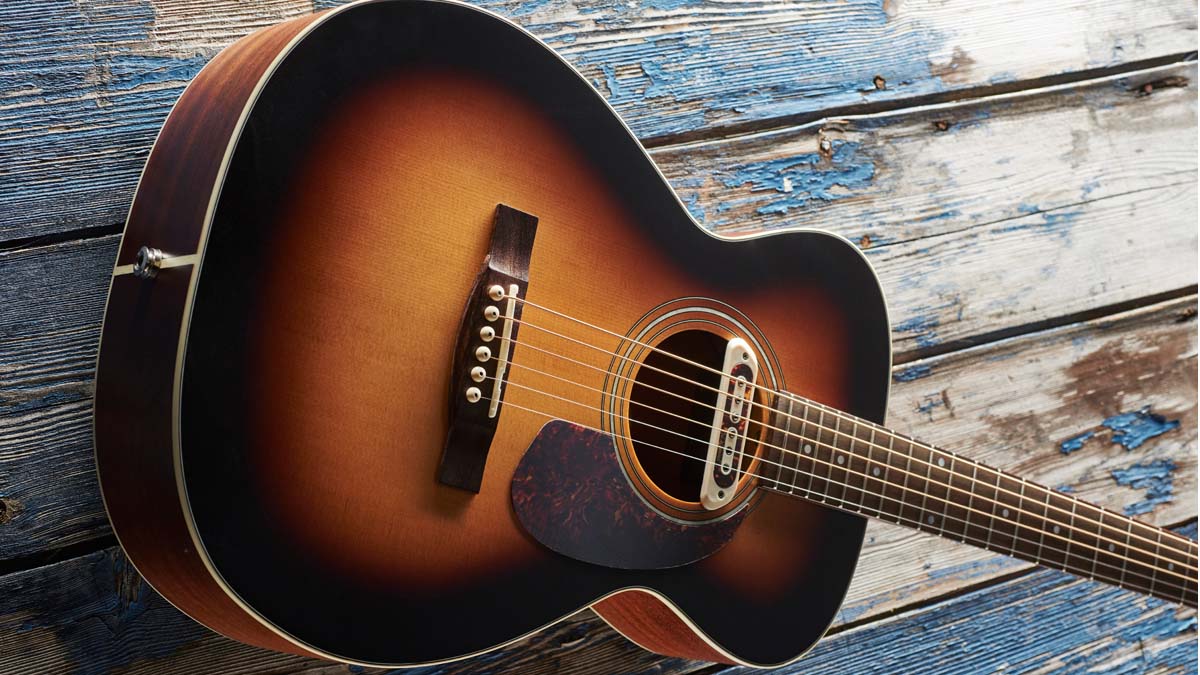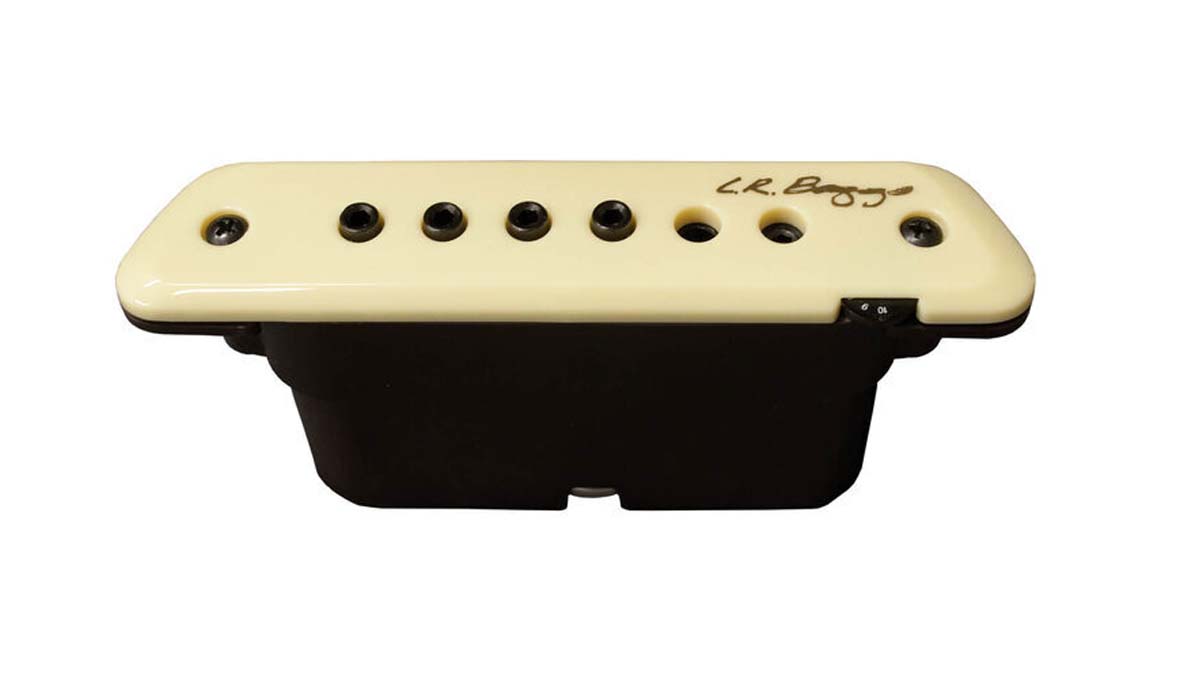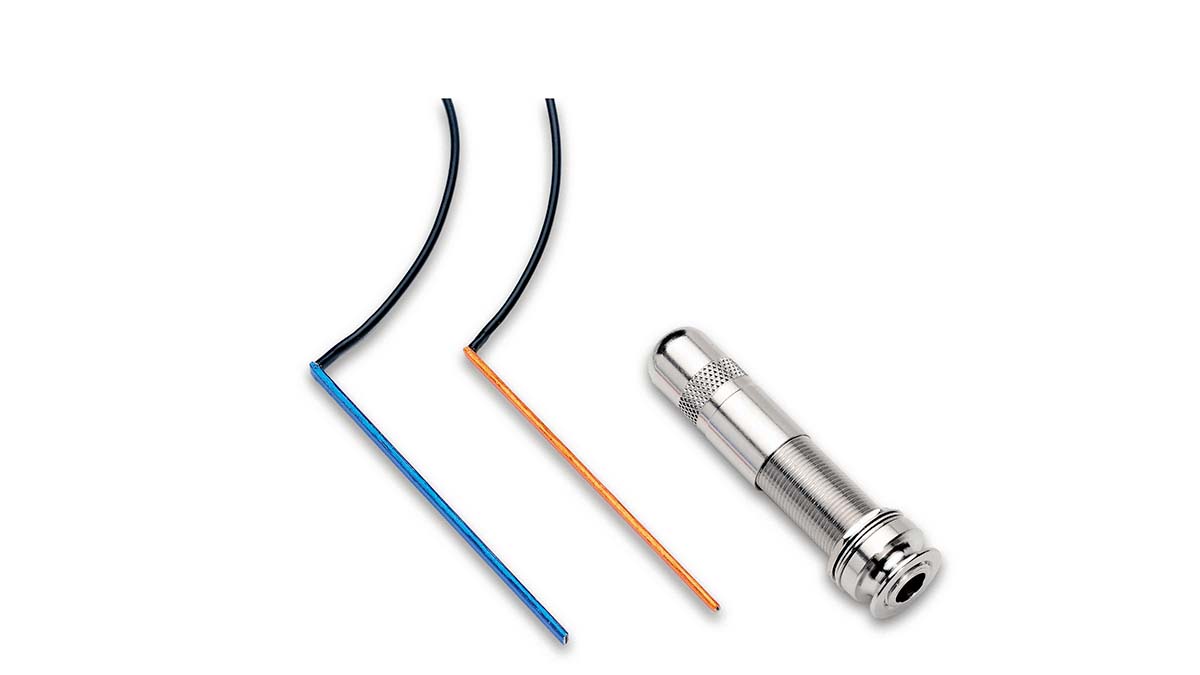Understanding the Two Main Types of Acoustic Pickups – and How to Amplify Them
Start your journey to great amplified acoustic tone here.

As the lines between electric and acoustic guitars continue to blur, it’s easy to get confused about pickup systems. Most players know that an acoustic with onboard electronics plugged into an electric guitar rig sounds bad, but relatively few players consider why.
The following is a basic overview of the two main kinds of pickups relevant to acoustic players in need of amplification.
Magnetic Soundhole Pro/Con
The electromagnetic pickups commonly found on electric guitars can be used in the soundhole of an acoustic guitar, and they will sound pretty good through an electric-guitar amp because of the high impedance, low output, and tight midrange focus.
Use a direct box to convert a magnetic pickup to an appropriate level before sending it to a P.A. Active, battery-powered soundhole pickups can deliver more output and range than passive versions, but all magnetic pickups are generally designed with a middle focus.
That focus, plus placement in the soundhole far from the bridge yields a tone that is more akin to the rhythm pickup on an electric.

Magnetic soundhole pickups usually add a distinct color to the sound. They don’t capture soundboard vibrations, which are a huge factor in the hallmark of any acoustic instrument. Some players swear by the soundhole tone and appreciate how the attack starts softly and blossoms, almost like striking a match.
Others feel it lacks body and makes an acoustic sound like a cheap electric. Players who gig heavily like soundhole pickups because they’re practically bulletproof, and it’s a great idea to keep one in your gig bag.
All the latest guitar news, interviews, lessons, reviews, deals and more, direct to your inbox!
One of the primary benefits or drawbacks, depending on how you look at it, has to do with installation. Soundhole pickups are rarely pre-installed on a guitar. You put it in when you need it, and take it out when you don’t.
Temporary installation can be a clunky affair, and leaves a cable dangling from the soundhole. Permanent installation is preferable for routine giggers, but that requires professional help and leaves you with a pickup blocking part of the soundhole, plus a heavier guitar. Audition a few before making that move.
Undersaddle Piezo Pro/Con
The piezo electric pickup is ubiquitous on acoustic-electric guitars. It requires some form of preamp that, in the modern era, is usually onboard, features at least volume and tone controls, and is battery powered. The output jack is generally housed in the strap endpin.
The transducer is most commonly a strip that’s placed under the saddle, which is ideal for capturing the sound of all the strings transmitting vibrations into the bridge, which is set in the soundboard, allowing a portion of those vibrations to transmit as well.

All that information shooting into the bridge location yields a bright, forthright tone with a fast, in-your-face attack known to acoustic guitarists as the infamous piezo “quack.” The sound is exaggerated when the player applies a significant attack, as the extra energy can overwhelm the pickup and result in audible signal compression.
A preamped piezo signal sounds fine when plugged straight into a P.A. because of its full-frequency range and appropriate level. Piezo pickups sound thin and tinny plugged into an electric-guitar rig because the amp isn’t designed to handle its full-frequency range.
Piezo technology wasn’t harnessed and applied to the acoustic guitar widely until the 1970s. Some of those early pickups sounded bad, but piezo pickup technology has grown by leaps and bounds, and these days even a relatively cheap undersaddle pickup can sound decent.
High-end models tend to sound realistic, especially when coupled with good preamps and expanded upon in dual-systems that employ mics.
Whether you prefer the mellow, midfocused tone of a magnetic soundhole pickup or the bright, full-range tone of an undersaddle piezo, there’s never been a more exciting time to be an acoustic-electric player, as a great range of options are available at all price points.
Jimmy Leslie is the former editor of Gig magazine and has more than 20 years of experience writing stories and coordinating GP Presents events for Guitar Player including the past decade acting as Frets acoustic editor. He’s worked with myriad guitar greats spanning generations and styles including Carlos Santana, Jack White, Samantha Fish, Leo Kottke, Tommy Emmanuel, Kaki King and Julian Lage. Jimmy has a side hustle serving as soundtrack sensei at the cruising lifestyle publication Latitudes and Attitudes. See Leslie’s many Guitar Player- and Frets-related videos on his YouTube channel, dig his Allman Brothers tribute at allmondbrothers.com, and check out his acoustic/electric modern classic rock artistry at at spirithustler.com. Visit the hub of his many adventures at jimmyleslie.com
